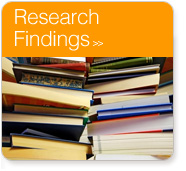Prevalence of Biopsy Switching Errors
 Medical research, reports from respected news organizations and real-life cases document the existence of Specimen Provenance Complications (SPCs) in the diagnostic testing cycle for cancer. A clinical study conducted at Washington University School of Medicine confirmed specimen contamination and transposition errors led to diagnostic errors. Published in the American Journal of Clinical Pathology, the study documented the rate of occult SPC occurrence through prospective analysis of approximately 13,000 prostate biopsies performed as part of routine clinical practice. Results indicated that up to 3.5% of the biopsy specimens being evaluated may not belong exclusively to the patient being diagnosed. With each case in the study involving at least two individuals the error rate actually underestimates the percentage of patients potentially affected by incidents of biopsy misidentification. Furthermore, the study demonstrated that errors occur across a variety of practice types and diagnostic laboratories, indicating no one setting is immune from this problem.1
Medical research, reports from respected news organizations and real-life cases document the existence of Specimen Provenance Complications (SPCs) in the diagnostic testing cycle for cancer. A clinical study conducted at Washington University School of Medicine confirmed specimen contamination and transposition errors led to diagnostic errors. Published in the American Journal of Clinical Pathology, the study documented the rate of occult SPC occurrence through prospective analysis of approximately 13,000 prostate biopsies performed as part of routine clinical practice. Results indicated that up to 3.5% of the biopsy specimens being evaluated may not belong exclusively to the patient being diagnosed. With each case in the study involving at least two individuals the error rate actually underestimates the percentage of patients potentially affected by incidents of biopsy misidentification. Furthermore, the study demonstrated that errors occur across a variety of practice types and diagnostic laboratories, indicating no one setting is immune from this problem.1
In comparison this study was used as a reference in data presented at the 2014 San Antonio Breast Cancer conference where 3,545 breast cancer cases from 7 practices contributing 100 or more cases each were examined. The DNA testing revealed occult SPCs in 16 cases (0.45%), of which six (0.17%) were a complete transpositions with another patient and ten (0.28%) reflected contamination of the biopsy specimen by tissue from one or more unidentified individuals.
While these error percentages may seem low, when applied to the 1.6 million breast biopsies performed each year,2 the impact becomes much more significant. A 3.5% error rate indicates that approximately 56,000 biopsies may be subject to undetected specimen provenance errors which could lead to a cancer diagnosis and treatment being assigned to the wrong patient. In the case of Biomarker Testing a specimen admixture3 (contaminated with another’s DNA) can cause incorrect findings and confound the biomarker results leading to erroneous therapy and adverse patient outcomes.
Further analysis of the error rate data in these studies associate the societal economic burden of healthcare expenditures due to undetected specimen provenance complications to exceed $880 million annually.4
1. Pfeifer JD, Liu J. Rate of occult specimen provenance complications in routine clinical practice. Am J Clin Path. 2013;139(1):93-100.
2. Data provided by Thomson Reuters In-Patient and Out-Patient Views.
3. Sehn JK, Spenser DH, Pfeifer JD, et al. Occult specimen contamination in routine clinical next-general sequencing testing. Am J Clin Path. Oct 2015;144:667-674.
4. Wojno, Hornberger, Schellhammer, et al. The clinical and economic implications of specimen provenance complications in diagnostic prostate biopsies. The J of Urol. 2015 Apr;193(4):1170-7.







